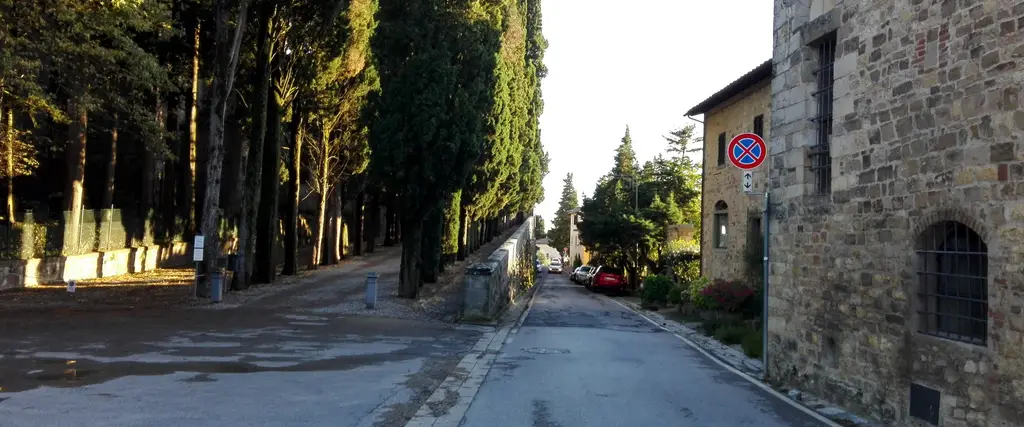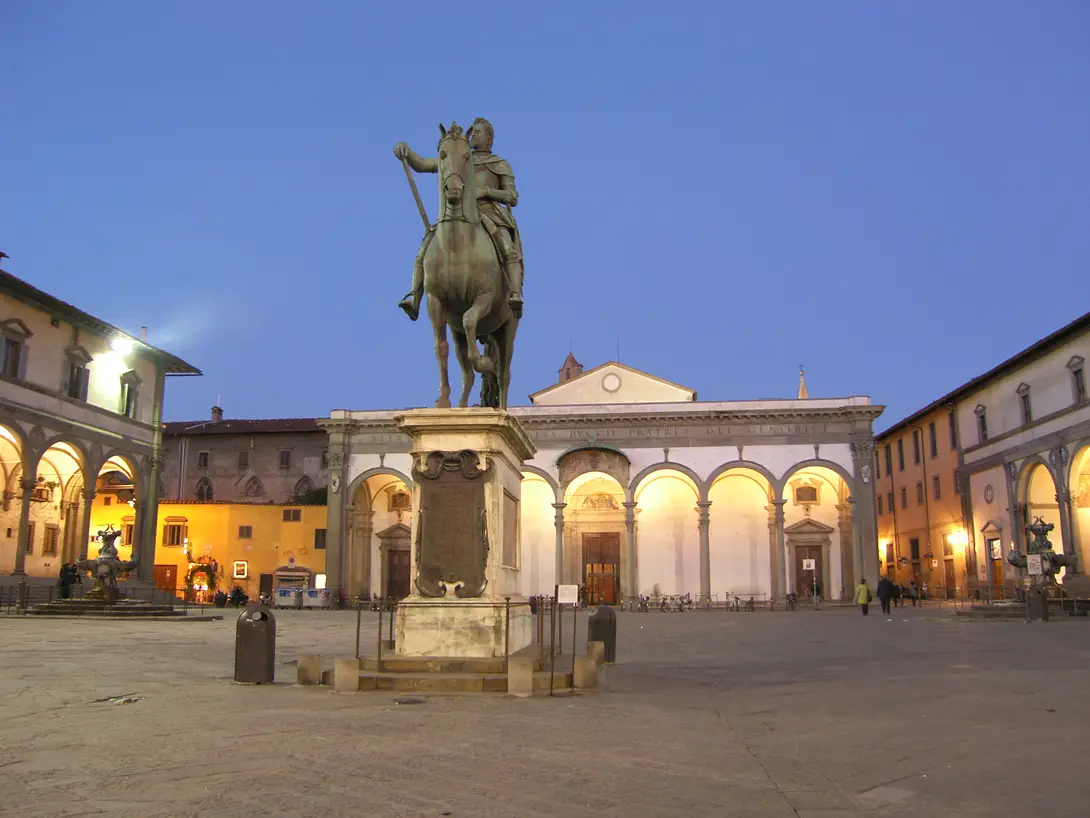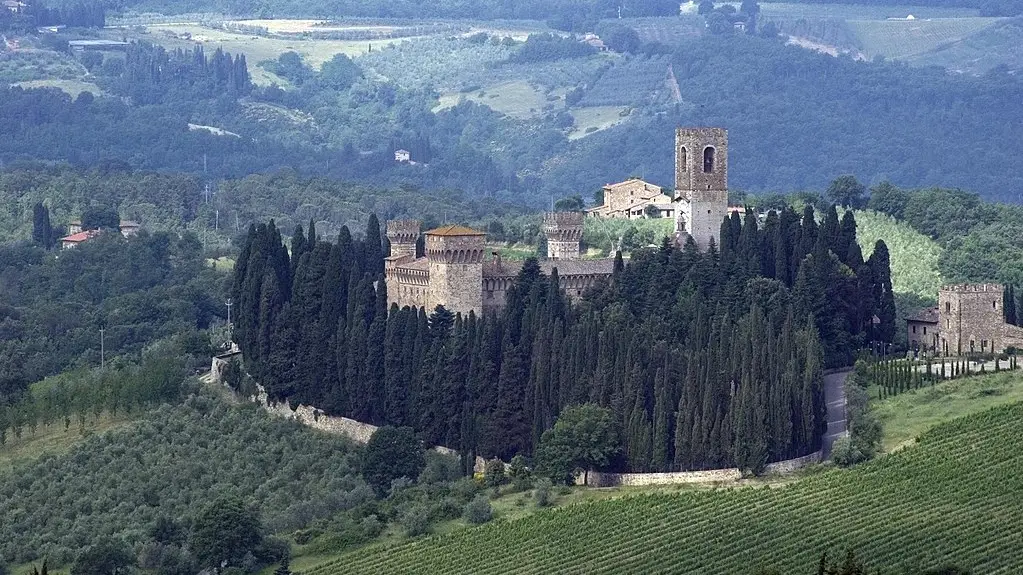
The via Romea Sanese
The Via Romea Sanese is one of the Cammini (walkways) di Toscana and joins the city of Florence with the city of Siena, crossing one of the most iconic territories of this region.
It follows the routes of travelers of the past who went to Rome (via Romea) or joined the route of the via Francigena.
The route is 78 kilometers long, organized into 4 stages. It crosses 8 municipalities between the provinces of Florence and Siena, in a very gentle landscape, rich in villas, castles, abbeys, and vineyards. The route runs mainly on dirt tracks, and only in some cases passes on secondary roads.
From Piazza Santissima Annunziata, in the center of Florence, you can travel to the Basilica of San Francesco in the city of the Palio. To travel this, we cross the territory south of Florence, with the towns of Pozzolatico and Tavarnuzze, to reach San Casciano Val di Pesa.
If you are already in Chianti territory, walk along the splendid Villa le Corti, crossing the hamlet of Montefiridolfi, and visit the impressive dimensions of the ancient Badia a Passignano.
From here, through the medieval village of San Donato in Poggio, past vineyards and agricultural farms, you will reach Castellina in Chianti. The last stage of the journey passes through the town of Monteriggioni, high up with its towers, and finally leads to the center of Siena.
The Via Romea Sanese can be considered a "variant" of the Via Francigena, which does not directly touch the Florentine territory. Yet, even if taken as a separate route, it will not fail to amaze walkers who will fall in love with its surrounding landscapes.
On this website in the Download section you can find a map of the hiking path
Comune di Firenze
Los lugares
Etapas
Piazza Santissima Annunziata
The Piazza della Santissima Annunziata is characterised by the Renaissance aspect which Brunelleschi conferred in it with the construction of the colonnade for the Ospedale degli Innocenti (Museum). The elegant harmony of the hospital building conditions the entire square, and the colonnade itself is later repeated in the Loggiato dei Serviti, and in the façade of the church. As a result Brunelleschi’s design assumes a certain urbanistic importance, underlined by the fact that this square is one of the few points of the city from which one can see the cupola of the Cathedral, the monumental symbol of the fifteenth century city.
The square has also always played a significant role in the religious, cultural and economic life of Florence, which is closely related to the religious institute of the Servants of Mary. In fact the presence of an image of the Annunciation which is believed to be miraculous has made the church of Santissima Annunziataan important centre of devotion, and a destination for pilgrimages and processions. As well as this, the fact that in Florence the feast of the Annunciation (25 March) coincided up until 1750 with the start of the new civil year, made the square the obvious choice for the celebration of this holiday which was both civic and religious.
The square is dominated in the center by the equestrian monument of Ferdinando I de' Medici, Grand Duke of Tuscany, by Giambologna and finished by his pupil Pietro Tacca, who was also responsible for the two side fountains (1629) depicting sea monsters. Also on the square, at the corner of the church facade, is the National Archaeological Museum of Florence, one of the most important in Italy, with valuable collections of Egyptian, Etruscan and Greco-Roman art.
This square also hosts one of the most typical traditions, theRificolona. This Florentine Feast is held every September 7th, the night before the Nativity of the Virgin Mary.
Città di San Casciano in Val di Pesa
Città di San Casciano in Val di Pesa
San Michele Arcangelo a Passignano abbey
Founded in 1049 by San Giovanni Gualberto, it is a picturesque monastic complex fortified located among the Chianti hills, at Passignano.
The architectural complex still appears to be enclosed within the fifteenth-century quadrangular wall curtain with corner towers, but the neo-Gothic additions made at the end of the nineteenth century are evident when, suppressed the monastic community, it was transformed into a villa.
The church has a single nave in the shape of a Latin cross and it has been almost entirely rebuilt in the second half of the XIX century; inside interesting paintings by Domenico Crespi, known as Passignano, and Alessandro Allori.
The monastery hosts a wonderful Last Supper by Domenico Ghirlandaio painted between 1440 and 1485 and recently restored.

